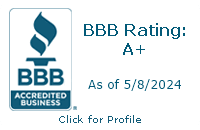What’s so valuable about a question? Isn't the answer worth more than the question?

Being a consultant, you might think my job is to be in the “Answers” business. In many ways, that's true because ultimately our clients look to my associates and me for answers to help solve a business problem.
In reality, though, I’m in the “Questions” business, as I'll explain.
“A Good Question Beats a Good Answer”
There's a saying that “A good question beats a good answer.” Why is that? Without a good question, thinking does not proceed deeply enough to yield a good answer.
When you've got a problem to solve, you want to either be a person having one or more of the following qualities, or work with someone who has at least a couple of them:
- Being Naturally Inquisitive or Curious – These people want to understand how things fit together so everything works to produce the desired result.
- Always Restless – This is someone who always wants to do more, or to change something just for the sake of change.
- Wanting to Know More – While these folks can be annoying because they're always asking questions, they are also the ones who have fed their mind the most items to consider.
- Adventurous – Such a person wants to have as many experiences as possible.
Persons with these qualities likely ask good questions. Even if you are such a person, I find it helpful to work with someone else having these qualities as a “Thinking Partner” so I can benefit from the different experiences and viewpoints they bring when asking their questions.
Let's say you don't have time to find a Thinking Partner, and lack some or all of these qualities – what can you do? Fortunately, there are resources you can use and processes you can follow to ask better questions.
Innovative Questioning
In one of my annual book review newsletters, I reviewed an excellent book – and one I highly recommend – titled A More Beautiful Question, by Warren Berger. As I wrote then, the third chapter, “The Why, What If, and How of Innovative Questioning,” is the heart of the book – a general three-part framework for innovative questioning, organized by the types of questions at each stage:
- WHY questions arise when a person encounters a problem or limitation – for example, “WHY does stepping back help us move forward?”
- WHAT IF questions help a person generate possible solutions or improvements – for example, “WHAT IF you sleep with a question? (Will you wake with an answer?)”
- HOW questions enable a person to take a promising possibility and figure out how to bring it to life – for example,“HOW might we create a symphony together?”
These three types of questions and the accompanying examples are good starting points for “Big Picture Thinking.” The phrasing of the third question – “How might we ... ?” – is excellent for encouraging “Possibility Thinking” to expand the number of options to consider.
Once you've gotten a rough idea of how the solution should – or might – look, then I recommend you shift gears to begin fleshing out the details.
Thinking Like a Journalist
There's a reason sentences are structured the way they are, built around a noun (Who will) and a verb (do What). Sentences describing a business process typically include other details such as:
- Time frame (When),
- Location (Where),
- Specific steps to follow (How),
- Required tools (with What), and
- Rationale for the work being done (Why).
You probably recognize these as the “Journalism Words” from high school or college. There are several types of sentences, including a journalist's typical output, an article composed of “Statements.” “Questions” are another type of sentence asked to gain further information.
A variation of one of the previous examples in “Innovative Questioning” might be “HOW might we perform a symphony together?” Coming up with a complete answer to this question involves asking more focused questions centered on the Journalism Words:
- Who – Who do we know that plays string, woodwind, brass, or percussion instruments?
- What – What works do we want the musicians to play, and what instruments are required?
- When – When would we want them to play?
- Where – Where do we want them to play?
- Why – Why do we want them to play?
- How – How are we going to schedule rehearsals and promote the event?
Once we've determined the answers to these and other questions, we can then develop a plan composed of “Statements” to explain how we – and many others – can perform a symphony together.
While this was a simple example, the same general concepts apply to solving a business problem – there are no answers without questions.
Questions Engage Two Types of Thinking
Over the years, I've read many books and articles about how people think, and they generally cover the two major types of thinking:
- Critical Thinking – Tapping that part of your brain associated with step-by-step processing, logical inferences, and just general clear and unbiased thinking. This is frequently called your “Conscious Mind” – the mental activities your brain does when you're awake and alert.
- Creative Thinking – Coaxing that part of your brain providing you with creative leaps, non – obvious insights, and just general “ah-ha” moments! This is frequently known as your “Subconscious Mind” – the processes your brain AND your body carry out in the background, while you're awake yet relaxing, or when you're asleep or very sleepy.
To me, the Conscious Mind favors ...
- More Structure – It puts information into bullet points, outlines, and tables.
- Methodical Work – It proceeds step-by-step, not necessarily knowing what the outcome will be.
- Incremental Improvements – It trusts that its work will move you forward in some way.
- Critical Thinking – It is in use when you are deliberately trying to solve a problem.
By contrast, the Subconscious Mind favors ...
- Less Structure – It twists and turns the information you have fed into your brain.
- Playfulness! – It's like a kindergartner playing with crayons! It's going to color where and as it wants, without any self-editing.
- Breakthroughs – It will sort through multiple playful coloring's your inner child has created, and focus on the one it likes best.
- Creative Thinking – It is busy all the time, regardless of whether or not you are deliberately seeking a solution.
Your Conscious Mind and your Subconscious Mind work cooperatively – without you even realizing it – to process your thoughts and yield a solution.
How do questions help prod both these minds to do both types of thinking? Because both minds use the questions and related answers as input to critical thinking and creative thinking. Without sufficient inputs, you cannot harness your complete mind to solve a problem.
Some Final Tips
Here are a few of my favorite questions and questioning tips:
- How Might We ... ? – Beginning a question with these three magic words encourages Possibility Thinking.
- Who Will Do What By When? – This question is also the title of a wonderful little book by Tom Hanson and Birgit Zacher Hanson that helps two or more persons get clear on what each person will do and by when.
- What Can I Do To ... ? – This question is the premise of another excellent little book, QBQ: The Question Behind the Question: What to Really Ask Yourself to Eliminate Blame, Victim Thinking, Complaining, and Procrastination, by John G. Miller. Asking yourself a question beginning with these five words puts the focus on the one person you can control – yourself.
- Be Careful Using “Why,” “When,” “Who,” “They,” “We,” or “You” – As explained more fully in the book QBQ: The Question Behind the Question, these words can promote a "poor me" attitude, encourage putting off action until another time, or appear to be looking for a scapegoat to blame. Before asking a question with one or more of these words, try to reword your question to minimize or eliminate these words – and be careful of both your tone and body language when asking your revised question.
- Be Confident Asking the Dumb Question – Especially when you're new to a group or company, be confident enough to admit you don't know the group or business as well as others do and be willing to risk embarrassment by “asking the dumb question.” Your question likely isn't “dumb” at all and is probably a question the existing folks wanted to ask, yet did not want to risk appearing to not know the answer or to not realize a possibly obvious answer.
- Be Comfortable Asking LOTS of Questions – Asking questions is how you learn, how you gather information to analyze, how you get others to think, and how you test ideas.
When asking questions, it certainly helps to be inquisitive, curious, restless, or adventurous. Even if none of those words describes you, just realize that asking lots of good questions to leverage your mind's capabilities in the manner I described is a process anyone can follow. When you routinely ask good questions, you're well on your way to consistently delivering robust solutions.
Sincerely,

Todd L. Herman






